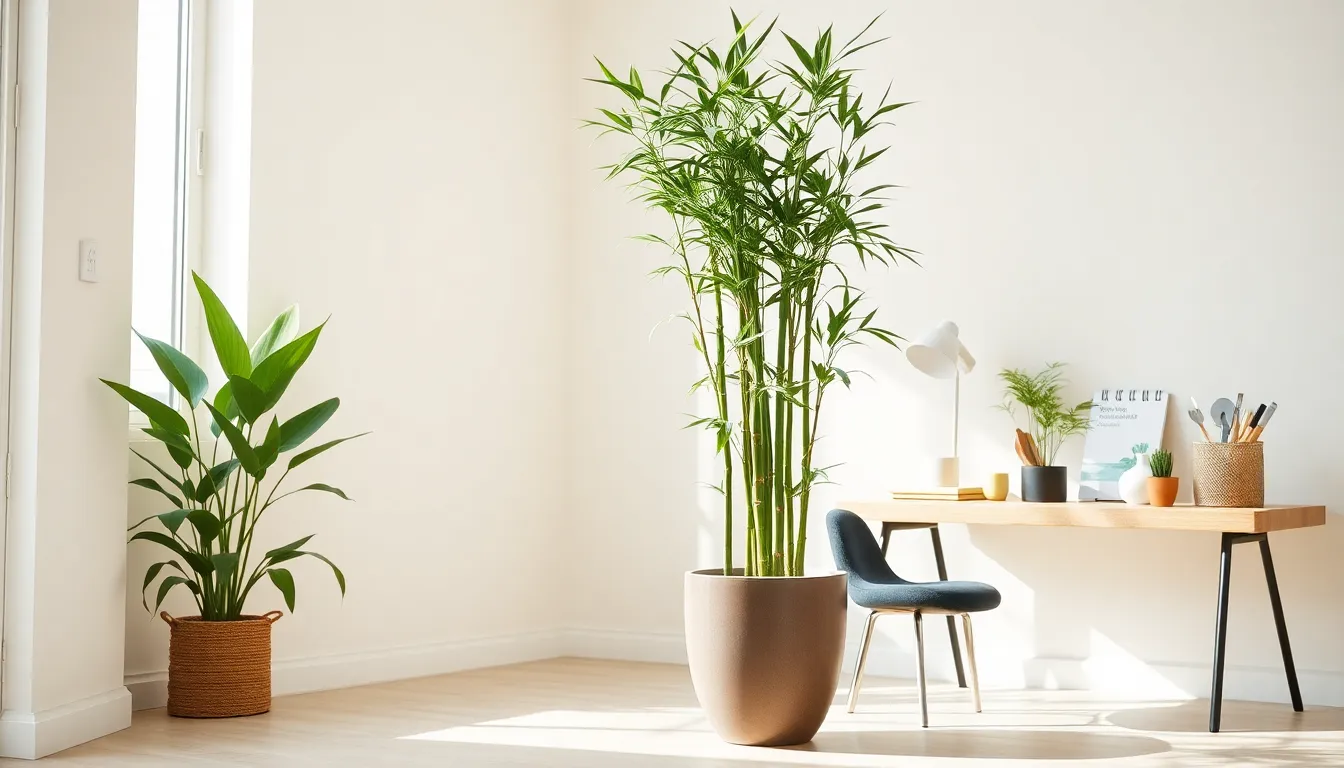Taking care of an indoor bamboo plant can feel like a high-stakes game of botanical chess. You want your plant to thrive without turning your home into a jungle, right? Fear not. With the right strategies and a dash of humor, anyone can cultivate a lush bamboo oasis, no matter how brown their thumbs may be. Ready to jump into the world of indoor bamboo gardening? Let’s get started.
How to Take Care of Bamboo Plant Indoor

Bamboo is often celebrated for its resilience and rapid growth. It belongs to the grass family, making it unique among other houseplants. The versatility of bamboo allows it to adapt quickly to various environments, which is part of its charm. This delightful plant can bring a touch of tranquility to any indoor space, thanks to its appealing aesthetic and air-purifying qualities.
When considering bamboo as an indoor plant, it’s important to know that it can grow tall and is prone to leaning if not properly cared for. By understanding bamboo’s roots, both literally and metaphorically, gardeners can create the perfect environment for this stunning greenery.
Types Of Bamboo for Indoor Growth
Not all bamboo is created equal, especially when it comes to indoor gardening. Certain species are better suited for indoor life than others. Here are some popular types:
- Lucky Bamboo (Dracaena sanderiana): Known for its easy-going nature, lucky bamboo doesn’t actually belong to the true bamboo family but has become a favorite among plant enthusiasts. Usually sold in water or soil, it symbolizes fortune and prosperity.
- Black Bamboo (Phyllostachys nigra): This striking variety can add a dramatic flair to any room because of its unique black stalks. Though it can grow tall, it’s manageable in pots and looks fantastic in minimalist decor.
- Dwarf Bamboo (Fargesia spp.): Perfect for smaller spaces, this bamboo stays compact and bushy, making it an excellent choice for indoor arrangements.
Each type has its own unique charm and growth habits, so choose one that fits your style and living space.
Ideal Conditions For Indoor Bamboo
Creating the right environment for bamboo plants is crucial for their success indoors. Here’s what they need:
Watering Your Bamboo Plant
When it comes to watering, bamboo prefers slightly moist soil. Over-watering can lead to root rot, while under-watering can cause drooping. A happy medium is key. Aim to water your bamboo every week, or whenever the top inch of soil feels dry. If using tap water, let it sit out overnight to allow chlorine to dissipate, because yes, bamboo can be picky about its H2O.
Fertilizing Techniques for Indoor Bamboo
Feed your bamboo plant every month during its growing season, which typically runs from spring to early fall. Use a balanced, water-soluble fertilizer, diluted to half strength. This encourages vibrant growth and keeps your plant happy. Too much fertilizer can lead to excess salt build-up, which the bamboo does not appreciate.
Pruning and Trimming Bamboo
Regular pruning helps control height and encourages bushier growth. Trim back any dead or yellow leaves to improve overall health. When bamboo gets too tall, simply snip off the top a few inches to encourage growth in other areas. It’s like giving your bamboo a stylish haircut.
Common Pests and Diseases
No good plant care guide would be complete without a crash course on pests and diseases. Bamboo can attract unwanted guests like spider mites, scale, and aphids. Keeping an eye out for these little intruders will help you maintain a healthy plant.
If pests invade, give your bamboo a gentle spray with insecticidal soap or a neem oil solution. Make sure to treat all parts of the plant, especially the undersides of leaves where pests tend to hide. Bamboo can also be affected by fungal infections, so good airflow around your plant is vital for prevention.
Signs of Stress in Bamboo Plants
Understanding your bamboo’s cues is essential for its well-being. Here are some signs that your bamboo might be feeling stressed:
- Yellowing Leaves: This can indicate overwatering or nutrient deficiency. If the leaves start losing their vibrant green hue, it’s time to reassess your care routine.
- Drooping Stalks: If the stalks start to slump, your bamboo might not be getting enough light or water. Find a brighter spot or adjust your watering schedule accordingly.
- Stunted Growth: If your bamboo stops growing altogether, check for pests or ensure it’s not pot-bound. Pot-bound bamboo often needs repotting for more room to stretch out.
Proactive care will keep your plant thriving and well-adjusted.

